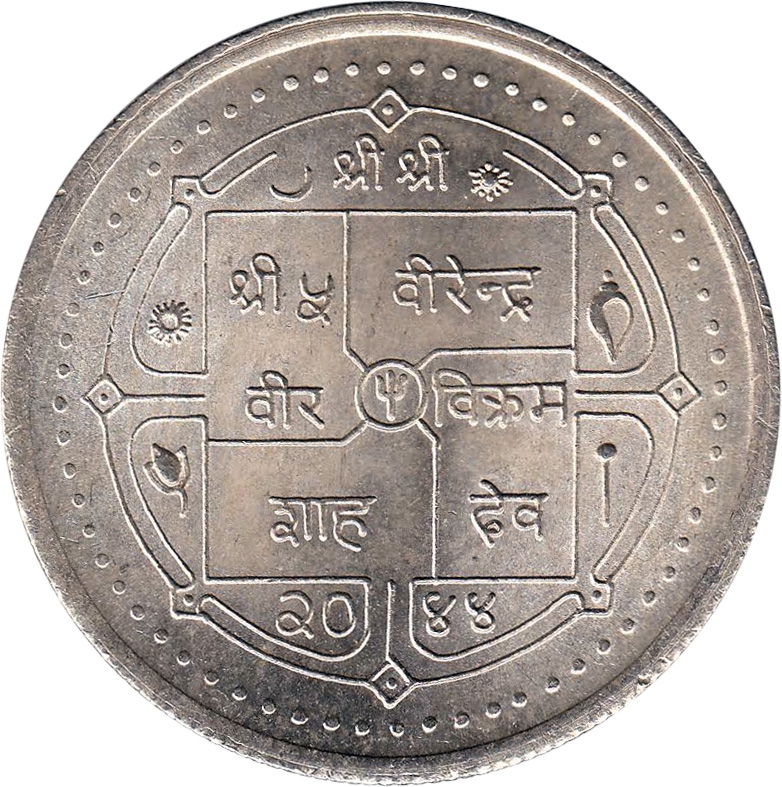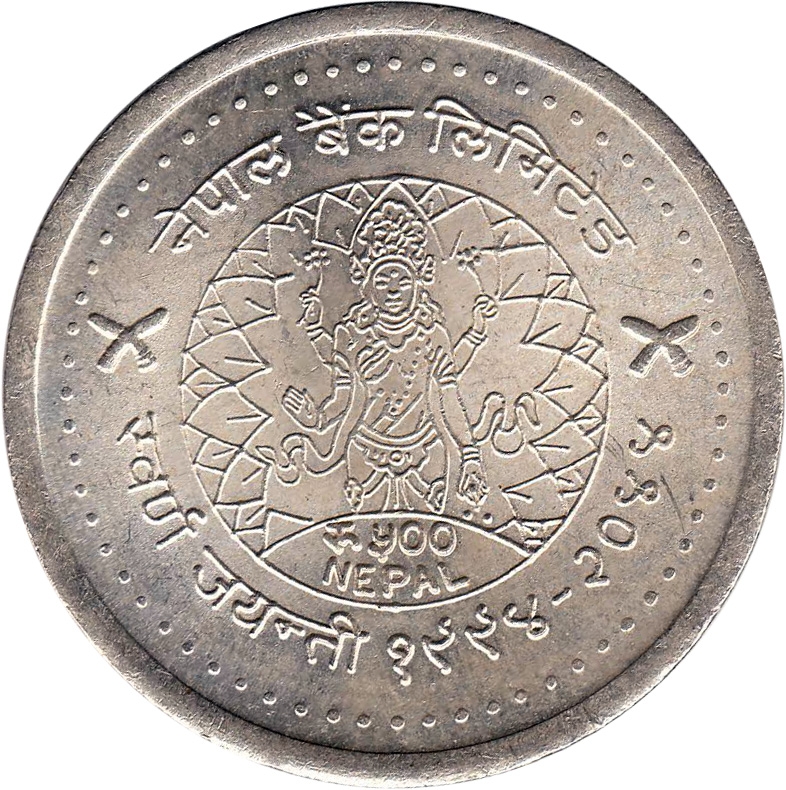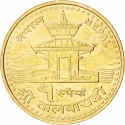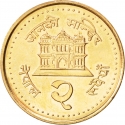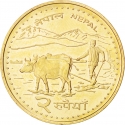You are about to finish your registration. Please check your mailbox (including spam folder). There should be a letter with a confirmation link. Check setting to make sure that your e-mail address is correct.
Send letter againDescription
Birendra Bir Bikram Shah (Nepali: वीरेन्द्र वीर विक्रम शाह) (1945–2001) was the 11th King of Nepal and a South Asian statesman. The eldest son of King Mahendra, whom he succeeded in 1972, he reigned until his death in the 2001 Nepalese royal massacre.
Nepal Bank Limited (Nepali: नेपाल बैंक लिमिटेड) is the first commercial bank of Nepal. It was established in 1937 which marked the beginning of an era of formal banking in Nepal. This marked the beginning of an era of formal banking in Nepal. Until then all monetary transactions were carried out by private dealers and trading center.
Obverse

|
Traditional square design includes images of Padma (lotus), Chakra, Moon, Sun, Shankha (conch shell) and Gada (mace). Lettering is "His Majesty King Birendra Bir Bikram Shah", date below. श्री श्री |
|---|---|
Reverse

|
The logo of Nepal Bank Limited includes an image of goddess Lakshmi. Texts "Nepal Bank Limited" and "Golden Jubilee 1994-2044" are separated by the images of two khukuri. Value "Rs. 500" and name of country in the centre. नेपाल बैंक लिमिटेड |
| Edge |
500 Rupee
50th Anniversary of Nepal Bank Limited
KM# 1035
50th Anniversary of Nepal Bank Limited
